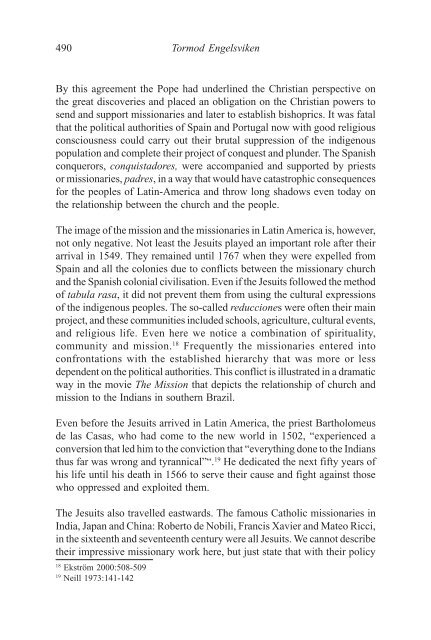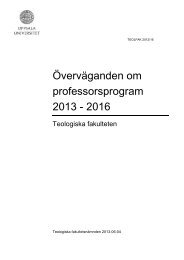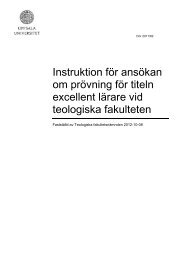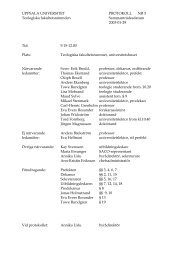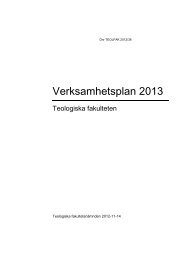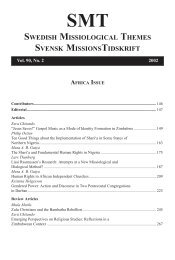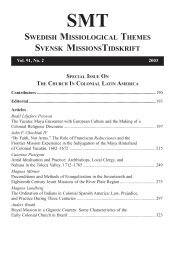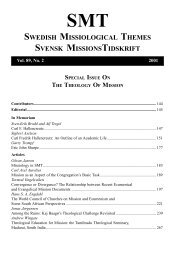SWEDISH MISSIOLOGICAL THEMES SVENSK MISSIONSTIDSKRIFT
SWEDISH MISSIOLOGICAL THEMES SVENSK MISSIONSTIDSKRIFT
SWEDISH MISSIOLOGICAL THEMES SVENSK MISSIONSTIDSKRIFT
You also want an ePaper? Increase the reach of your titles
YUMPU automatically turns print PDFs into web optimized ePapers that Google loves.
490 Tormod Engelsviken<br />
By this agreement the Pope had underlined the Christian perspective on<br />
the great discoveries and placed an obligation on the Christian powers to<br />
send and support missionaries and later to establish bishoprics. It was fatal<br />
that the political authorities of Spain and Portugal now with good religious<br />
consciousness could carry out their brutal suppression of the indigenous<br />
population and complete their project of conquest and plunder. The Spanish<br />
conquerors, conquistadores, were accompanied and supported by priests<br />
or missionaries, padres, in a way that would have catastrophic consequences<br />
for the peoples of Latin-America and throw long shadows even today on<br />
the relationship between the church and the people.<br />
The image of the mission and the missionaries in Latin America is, however,<br />
not only negative. Not least the Jesuits played an important role after their<br />
arrival in 1549. They remained until 1767 when they were expelled from<br />
Spain and all the colonies due to conflicts between the missionary church<br />
and the Spanish colonial civilisation. Even if the Jesuits followed the method<br />
of tabula rasa, it did not prevent them from using the cultural expressions<br />
of the indigenous peoples. The so-called reducciones were often their main<br />
project, and these communities included schools, agriculture, cultural events,<br />
and religious life. Even here we notice a combination of spirituality,<br />
community and mission. 18 Frequently the missionaries entered into<br />
confrontations with the established hierarchy that was more or less<br />
dependent on the political authorities. This conflict is illustrated in a dramatic<br />
way in the movie The Mission that depicts the relationship of church and<br />
mission to the Indians in southern Brazil.<br />
Even before the Jesuits arrived in Latin America, the priest Bartholomeus<br />
de las Casas, who had come to the new world in 1502, “experienced a<br />
conversion that led him to the conviction that “everything done to the Indians<br />
thus far was wrong and tyrannical”“. 19 He dedicated the next fifty years of<br />
his life until his death in 1566 to serve their cause and fight against those<br />
who oppressed and exploited them.<br />
The Jesuits also travelled eastwards. The famous Catholic missionaries in<br />
India, Japan and China: Roberto de Nobili, Francis Xavier and Mateo Ricci,<br />
in the sixteenth and seventeenth century were all Jesuits. We cannot describe<br />
their impressive missionary work here, but just state that with their policy<br />
18 Ekström 2000:508-509<br />
19 Neill 1973:141-142


